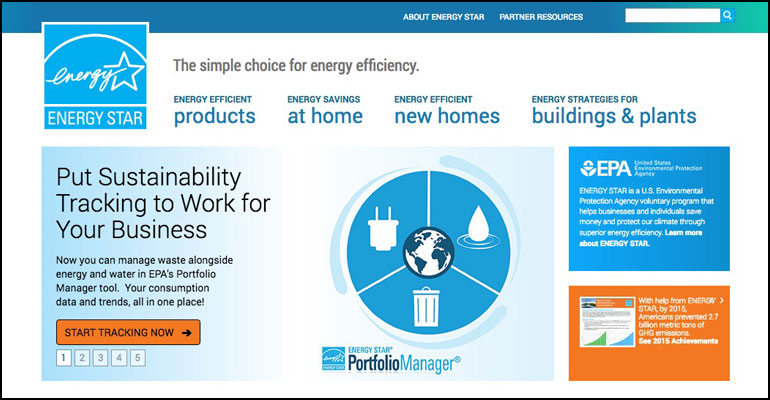 EnergyStar Rates Devices to Save Energy
EnergyStar Rates Devices to Save Energy
ENERGY STAR is a joint program of the U.S. Environmental Protection Agency and the U.S. Department of Energy. Its mission is to help American consumers save money and protect the environment through energy efficient products and practices.
In 1992 the US Environmental Protection Agency (EPA) introduced ENERGY STAR as a voluntary labeling program designed to identify and promote energy-efficient products to reduce greenhouse gas emissions. Computers and monitors were the first labeled products. Through 1995, EPA expanded the label to additional office equipment products and residential heating and cooling equipment. In 1996, EPA partnered with the U.S. Department of Energy for particular product categories. The ENERGY STAR label is now on major appliances, office equipment, lighting, home electronics, and more. EPA has also extended the label to cover new homes, and commercial and industrial buildings.
Through its partnerships with more than 8,000 private and public sector organizations, ENERGY STAR delivers the technical information and tools that organizations and consumers need to choose energy-efficient solutions and best management practices. Over the past decade, ENERGY STAR has been a driving force behind the more widespread use of such technological innovations as LED traffic lights, efficient fluorescent lighting, power management systems for office equipment, and low standby energy use.
Energy prices are a major concern for consumers. ENERGY STAR provides efficient energy information to aid consumers in product purchases. Information on covered products appear on labels displayed on over 50 product categories.
A Purchasers Product Guide
Roughly half of your home’s energy expenses go toward heating and cooling. So, the energy-efficiency of heating, ventilating, and air conditioning (HVAC) systems can have a significant impact on the bills you pay.
Here are tips to help you save money through selecting products that maximize efficiency:
- Change system air filters at least every three months
- Check filters every month, especially during heavy use months
- Tune up your HVAC equipment yearly
- Consult a certified professional for regular annual service
- Install a programmable thermostat
- Seal your heating and cooling ducts to avoid treated air loss
- Consider installing ENERGY STAR-qualified heating and cooling equipment
Set up service by Plumbing and Heating by Craig if you are concerned about the performance of your heating and cooling equipment, or if you know you need a new system.
How to Read and Understand EnergyGuide Labels
The EnergyGuide label provides two vital pieces of information you can use to compare different brands and models when shopping for a new appliance:
- Estimated energy consumption comparing a range for similar models
- Estimated yearly operating cost, based on the national average electricity costs
Source Links for Energy-Saving Tips
The Power is in Your Hands – a campaign to help consumers lower their energy usage
Home Energy Saver – Web-based do-it-yourself energy audit tool (Lawrence Berkely National Laboratory)
Heating and Cooling Equipment Research & Development – Oak Ridge National Laboratory
Consumer Guide to Home Energy Savings – American Council for an Energy-Efficient Economy (ACEEE)
Residential Natural Gas Prices – Energy Information Administration (EIA) – Official Energy Statistics from the U.S.Government
Residential Electricity Prices – Energy Information Administration (EIA) – Official Energy Statistics from the U.S.Government
Residential Heating Oil Prices – Energy Information Administration (EIA) – Official Energy Statistics from the U.S.Government
Propane Prices – Energy Information Administration (EIA) – Official Energy Statistics from the U.S.Government